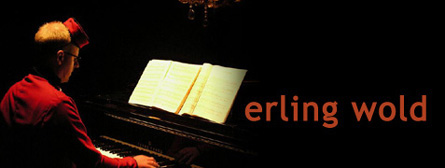Crash performance, New Langton Arts, San Francisco, CA, 1986. (camera: Steve Felty)
Crash was written in the summer of 1986 as the musical accompaniment for a dance of the same name created by choreographer Gay White. Based in part on the J. G. Ballard novel, the work tells the story of the destruction of a car and the maiming of its occupant. The work is com-prised of three broad sections. The first is a garden scene, where a young woman sleeps. The landscape is cold and damp. She has a dream of surrender, of a woman in mourning and of a funeral. In the second section, the woman accelerates onto a freeway on-ramp, where she is awakened, seduced by speed and exposed to impact. In the third section, a new sense of beauty evolves from the changes to her anatomy.
"I searched for my scars, those tender lesions that now gave off an exquisite and warming pain."
Performance of the dance at New Langton Arts, San Francisco, California, 1986, included the display of two videotapes prerecorded by Mark A. Z. Dippe. One provides a documentation of the dance, combining several camera angles. The second deconstructs the dance, illuminating small details that might otherwise be missed by the audience.
The score for the music of the third section is shown above. This recording was realized on an NED Synclavier II synthesizer. Digital control over the work allows the tuning of the pitches to be set precisely. Attention to tuning was something that was common to much of my music at the time. In this case, the static pitches are based on the simple scale shown at the top of the score. The moving pitches flirt with the tones of this scale and generate controlled beating effects.
Except for the instrumental (drum and string) samples, all of the component sounds in the last section are modifications of recorded natural sounds. One is an extremely high vocal sound. It appears in the piece replayed both in a very low and a medium register. Sampling can introduce spectral aliases, which are typically filtered out in digital-to-analog conversion. For the very low sounds, the sampling rate and filter cut off were chosen so that the first spectral alias was not removed. This alias is very interesting, as it is a mirror image in frequency of the original image spectrum. The addition of this alias lends a high, rich timbral edge to the sound. Also, as the original sound moves up and down, the alias mirrors its movement. Another sound source is a small Godzilla toy. I like to think that the semantic content of this source unconsciously contributes to the scariness of the finale.















